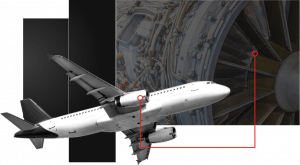Major aerospace manufacturers and suppliers have navigated the turbulence of the COVID-19 pandemic and are poised to surpass pre-pandemic production levels.
The CNC machine industry can benefit from these opportunities ahead, including drones, air taxis, and electric-power aircraft. The role of CNC machining in shaping the future of aerospace production has become increasingly pivotal.
Already facing a significant backlog, Boeing, Airbus, and other commercial aircraft manufacturers face substantial demand for about 9,400 passenger aircraft by 2027, primarily narrow-body jets, according to McKinsey & Company. An ambitious production rate of 55 to 100 aircraft a month for 5 years leads to challenges in supply chain management, including raw material availability, inventory control, and workforce reliability.
Here we outline the anticipated trends that will define the aerospace CNC machining industry in 2024 and years into the future.
Precision Takes Flight with Advanced Materials
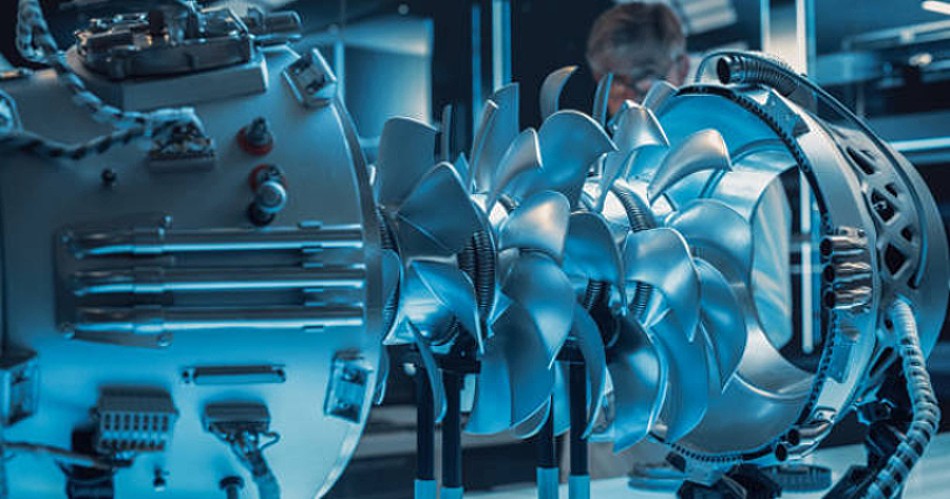
The increased adoption and utilization of advanced materials in 2024 promises to redefine the demands of CNC technologies and open doors to new benefits and capabilities across the aerospace industry.
Carbon-Fiber Composites and High-Strength Alloys
Integrating high-strength alloys and advanced materials such as carbon-fiber composites (CFRP) creates opportunities for productivity across CNC machine types—whether you’re using traditional 3-axis vertical machining centers, horizontal machining centers, or multitasking machines.
These materials have increasingly become the core of aerospace and defense manufacturing. Looking forward, there will be increasing industry demand for the production of complex structural components and engine parts that leverage the lightweight strength of carbon-fiber composites to enhance fuel efficiency, and the durability of high-strength alloys to ensure structural integrity.
The materials also address critical engineering challenges, enabling the production of tools that are resilient to heat, and the incorporation of efficient dust-capturing solutions, all supporting precision and cleanliness in the manufacturing environment.
Maraging Steel – Exceptional Strength and Toughness
Maraging Steel is poised to become a foundational material in aerospace CNC machining. Designers and engineers will deepen the incorporation of this alloy into critical aerospace components, including rocket motor casings, missile components, and aircraft landing gear. Aerospace manufacturers will face increasing demands to know how to manage, cut, and finish maraging steel with efficiency.
Introducing new and specialized tools, automated systems, and CNC machining equipment designed to handle Maraging Steel will enhance accuracy and overcome production challenges related to its unique material properties.
Nitinol – Shape Memory Alloy
Nitinol, a nickel-titanium alloy with shape memory capabilities, takes center stage in aerospace engineering. Its unique ability to return to a predetermined shape after deformation positions Nitinol as a critical material for deployable structures in aerospace applications.
Precision machining of Nitinol will play a pivotal role in crafting intricate aerospace components such as adaptive wing structures, satellite deployment mechanisms, and heat-activated actuators for aerospace engineering.
This alloy’s challenges in machining will be met with innovative engineering solutions aimed at ensuring accuracy and quality for these vital aerospace parts. Nitinol’s superelasticity, conductivity, high fatigue resistance, and corrosion resistance make it a highly valuable solution for new and emerging aerospace machining applications.
Graphene – Lightweight, Strong, and Flexible
The advent of graphene, a lightweight and flexible carbon compound, finds applications in high-speed transistors and flexible electronics integrated into CNC machining processes, elevating the performance of aerospace electronics.
Additionally, graphene’s role in energy storage with applications in supercapacitors and lithium-ion batteries, and its remarkable thermal management capabilities (it’s capable of handling 5300 W/m-K) make graphene a multifaceted material driving innovation in aerospace machining.
When evaluating CNC equipment for aerospace applications involving graphene, key factors include accuracy (especially with tight tolerances), adaptability to advanced materials, and efficient dust-capturing mechanisms. Precision machining will continue to harness the full potential of graphene’s lightweight, strong, and flexible properties for aerospace suppliers.
A machine tool’s ability to work with and take advantage of the unique characteristics of graphene will ensure optimal performance when crafting intricate components. Efficient dust-capturing mechanisms become crucial to maintaining a clean machining environment, preventing contamination, and ensuring the longevity of both the machine and the high-performance graphene materials.
Other Emerging Aerospace Materials
Beyond the spotlight, many other advanced materials will become more common. These may include but are not limited to innovative ceramics, high-performance polymers, and next-generation alloys, each contributing to the overall advancement and diversification of materials in aerospace manufacturing.
AI Digs Deeper into Aerospace Production
2024 emerges as the year when artificial intelligence (AI) breaks out of conventional boundaries to steer innovation in CNC machining and aerospace manufacturing. The deeper integration of AI with CNC machining technologies will create increased efficiencies and quality assurance to meet increasingly sophisticated industry needs, including tool path optimization, predictive maintenance, and flawless detection of material defects.
Equipment Integration
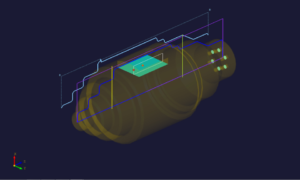 Nakamura-Tome exemplifies its commitment to innovation in this next phase of AI-driven precision manufacturing with its pioneering 3D Smart Pro AI CNC programming software.
Nakamura-Tome exemplifies its commitment to innovation in this next phase of AI-driven precision manufacturing with its pioneering 3D Smart Pro AI CNC programming software.
The software generates CNC programs automatically by analyzing workpiece shapes, cutting tools, and conditions from a 3D CAD model. It optimizes tool paths in addition to predicting maintenance needs and detecting defects to enhance productivity and quality.
This approach significantly reduces the required man-hours, as seen in Nakamura-Tome’s example of an entry-level engineer whose program creation time plummeted from 420 to a mere 20 minutes.
The software also incorporates a thermal expansion adjustment system built on machine learning. The AI tunes a thermal expansion compensation model by analyzing input time and measurement data for part dimensions. This compensation achieves increasing accuracy as more data is added.
Smart Factories
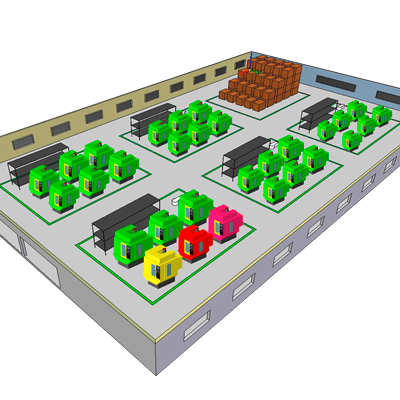 The deepening integration of AI pushes forward the once-futuristic concept of “smart factories” with production environments marked by unparalleled efficiency, streamlined operations, and a significant reduction in human error.
The deepening integration of AI pushes forward the once-futuristic concept of “smart factories” with production environments marked by unparalleled efficiency, streamlined operations, and a significant reduction in human error.
FANUC puts the concept of Industrial IoT and AI into practice with its FIELD (FANUC Intelligent Edge Link & Drive) system, an open platform interconnected with machinery and equipment that centralizes real-time data analysis and empowers manufacturers to draw intelligent conclusions, predict machine behaviors, and preempt potential failures.
This approach to the integration of AI technologies will result in a more responsive and adaptive aerospace manufacturing ecosystem, positioning the industry landscape for the more agile production needs of the future.
Sustainability
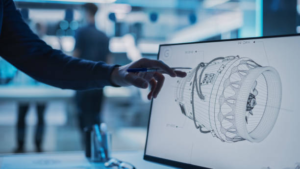 The aerospace industry is rapidly shifting focus towards achieving net-zero emissions, prompting extensive operational transformations.
The aerospace industry is rapidly shifting focus towards achieving net-zero emissions, prompting extensive operational transformations.
While much of the attention focuses on emissions from commercial jetliner fuel, the reality is that achieving sustainability requires significant work beyond reformulated fuels.
Beyond commercial aircraft, aerospace manufacturers and their partners along the industrial supply chain are prioritizing the adoption of sustainable production technologies that curb waste and pollution.
Aircraft manufacturers in particular, are focused on optimizing aeronautical designs for enhanced fuel efficiency and reduced weight to mitigate the environmental impacts of air travel. Progress in the commercial air industry will likely cascade to the defense and near-space sectors.
CNC machine manufacturers and equipment users must be ready to pivot to the aerospace industry’s solutions for achieving net-zero by 2050. Improved and alternative fuel sources could increase demand for machine shops to produce new components for innovative engine designs or improved aerodynamics that require advanced materials, multi-axis simultaneous machining, or secondary processing such as advanced coatings.
Here’s a look at how CNC machining can help the industry reach challenging sustainability goals.
Responsible Waste, Energy, and Material Practices
Companies must scrutinize and revamp their supply chains, fostering collaborative efforts toward sustainability across their networks. This is vital as companies face increasing pressure from regulators, consumer preferences, and investor demands that require a comprehensive approach encompassing the entire supply chain.
According to an EY report, major manufacturers will look to all suppliers to develop strategic partnerships to achieve sustainability objectives.
Yasda, for example, is committed to Sustainable Development Goals (SDGs), creating an equitable workplace, contributing to the local community, and reducing environmental impact.
CNC machining operations can support the supply chain matrix by reducing material waste and energy consumption. Reducing waste, for example, conserves valuable raw materials and reduces transportation costs.
The adoption of machines, accessories, and work processes that support sustainability efforts will position job shops as a valuable brand partner with current and future customers facing similar environmental mandates.
Digital Twin Technology
“Digital twins” refers to the introduction of virtual replicas for real-time production monitoring and optimization. This approach will continue to push the boundaries of efficiency and precision in CNC machining processes.
FANUC leads with their innovative “Digital Twin for CNC” that integrates CNC and digital technologies. By leveraging real-time feedback, FANUC foresees significant advancements in machine tool design, machining, and maintenance to usher in a future where productivity in aerospace manufacturing reaches unprecedented heights.
6-Axis CNC Machining
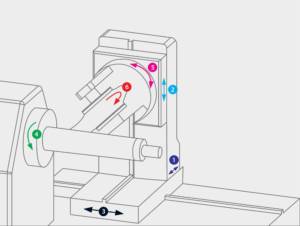 In aerospace CNC machining, 6-axis technologies advance precision manufacturing, creating an opportunity for shops to meet emerging demands of the aerospace industry in the years ahead.
In aerospace CNC machining, 6-axis technologies advance precision manufacturing, creating an opportunity for shops to meet emerging demands of the aerospace industry in the years ahead.
These machines further reduce setups and downtime, especially in producing intricate or complex aerospace components.
While this equipment can improve precision and further reduce lead time compared with 5-axis machines, it has challenges, including the need for more advanced software and skilled operators that are already scarce and in high demand. Also, this advanced equipment typically comes with a higher upfront cost.
6-Axis Machining Benefits
- Versatility and Customization: With its three translational and three rotational axes, 6-axis CNC machining offers unparalleled versatility, allowing for intricate customization of aerospace components. This adaptability ensures the production of highly specialized and unique parts tailored to specific industry needs.
- Avoiding Multiple Setups for Faster Production: Integrating a third rotational axis in 6-axis CNC machining eliminates the need for multiple setups, significantly expediting production. This reduction in setup requirements saves time and increases efficiency and overall productivity.
- Aerodynamic Surfaces, Engine Components, and Critical Parts: With its precision and versatility, 6-axis CNC machining is well-suited for manufacturing complex aerospace components such as aerodynamic surfaces and engine parts, ensuring adherence to industry-specific tolerances and quality benchmarks.
Industries That Will See CNC Machining Demand
Certain industries stand poised to experience a surge in demand as technology advances. In 2024, electric aircraft, drones, and air taxis, are anticipated to be key drivers, unlocking new possibilities and reshaping the future of manufacturing.
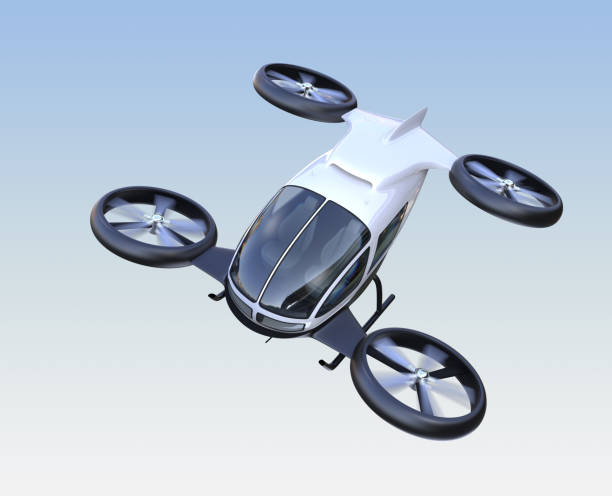 Electric Aircraft: The market is anticipated to grow significantly over the next 10 years. While estimates vary, market research estimates the industry growing from about $8 billion currently to about $40 billion in 2030. CNC machining is critical in crafting specialized parts such as lightweight airframes, battery enclosures, and precision components. The precision and flexibility of CNC machining ensure the production of complex geometries required for electric aircraft, contributing to their overall performance, safety, and adherence to stringent aerospace standards.
Electric Aircraft: The market is anticipated to grow significantly over the next 10 years. While estimates vary, market research estimates the industry growing from about $8 billion currently to about $40 billion in 2030. CNC machining is critical in crafting specialized parts such as lightweight airframes, battery enclosures, and precision components. The precision and flexibility of CNC machining ensure the production of complex geometries required for electric aircraft, contributing to their overall performance, safety, and adherence to stringent aerospace standards.
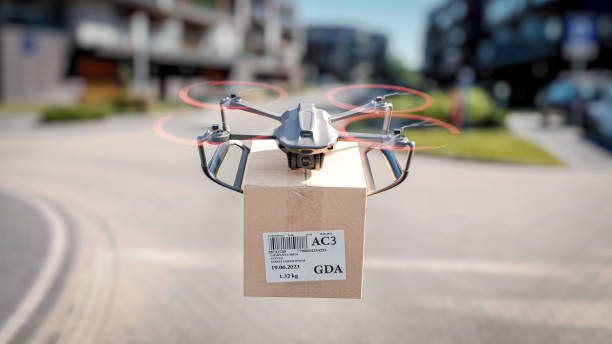
- Drones: Expanding commercial applications, including logistics, surveillance, and mapping, is driving the demand for UAVs. Similar to the electric aircraft sector, drone manufacturing is expected to grow from about $10 billion in 2023 to approximately $50 billion at the end of the decade. As the backbone of aerospace manufacturing, advanced CNC machining with automation and accessories becomes imperative to achieve this growth potential.
 Air Taxis: This sector captures the imagination for urban mobility but faces challenges beyond manufacturing before being a major growth opportunity for CNC machining. These include safety, regulations, communication, privacy, and noise. As such, the market is much smaller than other aerospace sectors. However, the growth rate is similar. The general view indicates growth of about 16% annually, reaching a value of about $6 billion over the next six years. In these early stages, CNC can offer fast prototyping of parts for propulsion systems for vertical take-off and landing (VTOL). Once the best propulsion and control systems are adopted, the CNC industry can apply the same manufacturing processes.
Air Taxis: This sector captures the imagination for urban mobility but faces challenges beyond manufacturing before being a major growth opportunity for CNC machining. These include safety, regulations, communication, privacy, and noise. As such, the market is much smaller than other aerospace sectors. However, the growth rate is similar. The general view indicates growth of about 16% annually, reaching a value of about $6 billion over the next six years. In these early stages, CNC can offer fast prototyping of parts for propulsion systems for vertical take-off and landing (VTOL). Once the best propulsion and control systems are adopted, the CNC industry can apply the same manufacturing processes.
Pioneering the Future – CNC Machining’s Crucial Role in Shaping Aerospace Innovation for 2024 and Beyond
The resurgence from pandemic setbacks is evident in aerospace, with the industry poised to rapidly exceed pre-pandemic levels. CNC machine builders, suppliers, and shops stand to benefit from this resurgence, especially with the surge in demand for electric-powered aircraft, drones, near-Earth spacecraft, and commercial aircraft. As Boeing, Airbus, Lockheed-Martin, and other major manufacturers gear up to meet unprecedented demand, challenges in supply chain management loom large.
The CNC industry faces opportunities and challenges to support both the big players and the stealthy startups. Pursuing greater efficiency, customization, and sustainability will continue to drive the mission of companies that depend on world-class CNC machining solutions.
Get Aerospace Machining Solutions
>>Increase Productivity and Profitability
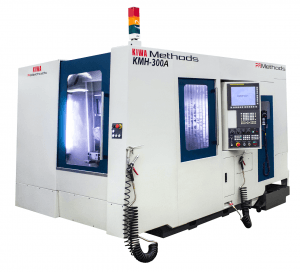 Case Study
Case Study
Kiwa Foot Print and Cutting Power Surpasses Expectations

